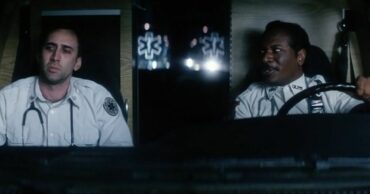Most people are familiar with Lord of the Rings, the renowned fantasy epic by J.R.R. Tolkien, but far fewer are aware of The New Shadow. The vast world of Middle Earth has enchanted countless individuals over time. Its stories of Dwarves, Trolls, Elves, and Orcs have inspired numerous related tales and fictional realms, from Dungeons & Dragons to Warcraft. However, despite the intricate histories Tolkien conceived and documented, he opted to leave the future unwritten. The New Shadow, the sequel that never came to be, would have been a narrative following the events of the famous trilogy. Yet, Tolkien abandoned it after a mere 13 pages.
Tolkien’s imagination was boundless. He was a master in the art of worldbuilding, the process by which an author creates a fictional world in which to set stories. During his lifetime, Tolkien published The Hobbit, The Lord of the Rings, and a couple of poetry books, including The Adventures of Tom Bombadil. The truly expansive parts of his work, however, were not published until after his death. Edited by his son Christopher Tolkien, the best-known of these is The Silmarillion — a dense collection of mythology and legendary tales, and the true prequel to The Lord of the Rings.
Why Tolkien Never Finished The New Shadow

The New Shadow was abandoned, and for good reason. A sequel story to follow a tale like Lord of the Rings would require villains and conflict. The problem is, this would have altered the world of Middle Earth by adding new context. Whether or not it would have been a good story would likely become secondary to one unfortunate truth — The New Shadow would have undermined the struggle at the heart of The Lord of the Rings, and everything its characters fought so hard for.
In one of his published letters, Tolkien explained that, “Since we are dealing with Men it is inevitable that we should be concerned with the most regrettable feature of their nature: their quick satiety with good.” His view, perhaps cynically, was that the humans of Middle Earth would soon grow tired with their world being good. The result would be a society beginning to decay. In a world rife with discontent and skulduggery, the evil in this story would come not from an external villain like Sauron but from the humans themselves. In this way, The New Shadow would’ve soured the ending of The Lord of the Rings.
What Happens In Tolkien’s Lord Of The Rings Sequel Story

Tolkien’s plan was to set The New Shadow around a century after the fall of Sauron. The world would be ruled by the descendants of Aragorn who’d become, in Tolkien’s words, “like Denethor or worse.” Gondor would be under the rule of King Eldarion, and the war of the One Ring would now be no more than a half-remembered story. Few who remembered the war would even still be alive. For those who were, it would be no more than hazy childhood memories.
The 13 pages of The New Shadow don’t include much in the way of plot. It’s no more than an introduction, and there’s no way to tell where exactly J.R.R. Tolkien himself would have taken the story — though he described it as a “thriller” about discovering and overturning a conspiratorial plot. However, the bit of story included focuses on a man named Borlas, tending a garden with a view of Minas Tirith. An opening conversation with a friend of his talks about the everpresent evil in the hearts of Men. Since the death of the Great King (presumably Aragorn), feelings of unrest and unease have been growing in Gondor. It ends with hints about ships disappearing from the river, the return of an old evil, and shady behavior in Gondor.
Why The New Shadow Shouldn’t Be Used For A New Movie

Writing a new movie based on Tolkien’s unfinished work, The New Shadow, is probably a terrible idea. It would likely do more harm than good to the world of Middle Earth, and it’s doubtful longtime Lord of the Rings fans would accept it as canon. It would also go against the wishes of Tolkien himself, who’d decided the story would be “both sinister and depressing.” After just 13 pages of writing, Tolkien had decided this story wasn’t worth telling, and any new writers would be wise to heed that opinion.
However, this is not to say that a sequel to Lord of the Rings can’t be written, just that The New Shadow would be a poor choice. There are certainly ways to tell a tale that doesn’t involve the Kingdom of Gondor falling almost immediately back into disrepair. The key to such a story, if it were ever to be written, would likely be to remain true to the ending of Lord of the Rings. Perhaps the most resonant line in Tolkien’s beloved trilogy comes from Samwise. “There’s some good in this world, Mr. Frodo, and it’s worth fighting for.” To be a worthy successor to Lord of the Rings, any future story would be wise to hold true to this sentiment.
READ NEXT: Wait – More Lord Of The Rings & The Hobbit? What The New Line Deal Means
 Follow Us
Follow Us





